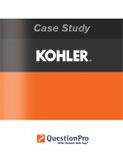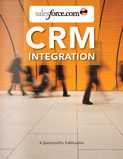Google - Student Survey
|
Anyone who has ever attempted to capture market intelligence from hundreds of thousands of users spread across thousands of geographical locations representing numerous variables knows there are huge input and output issues. Input Issues: usability issues surrounding data input are a nightmare. How do you make it easy to scroll through thousands of options? How do you ask questions in such a way that makes it easy for the user to get to the next question. How do you avoid open-ended questions, yet still get attitudinal feedback? Output Issues: Getting meaningful data is nearly impossible. The dataset is too diverse. While you can analyze data in the aggregate, you have no easy way to filter it according to key variables, or filters. How can you compare differences between geographic regions? Or ages? Or other factors? |
SurveyAnalytics has created a solution to address this issue, which it has put in place as part of a national student survey hosted by Google. SurveyAnalytics, using three key features of its hosted software program. Dynamic Lookup Tables, Sophisticated Reporting Functions and Customized Spotlight Report. Together, these three features solve the input and output issues as described above. Google has recently launched a national survey website to gain feedback and information about the use of email on college campuses across the country. Specifically, Google wanted to be able to evaluate the responses in aggregate but also be able to see responses at the state and college levels. The first step in solving the input issue was to reduce the total number of options displayed in response to the "where do you go to school" question. This involved the use of a Dynamic Lookup Table. |
Dynamic Lookup Table The list of all universities in the United States is over 4000. Obviously a list with 4000 items in a drop-down list is not feasible. SurveyAnalytics custom developed a Dynamic Lookup Table that first asks students for the "State" where they are going to school, and then automatically shows all the colleges, universities and trade schools in that state. This mechanism allows for capturing structured data from a very large data source -- in this case a list of over 4000 universities and colleges by sub-segmenting/categorizing them on the state level. It is important to note that this approach could have also been repeated one more time . asking users to input a city, zipcode or other geographical marker to further winnow down the options. In this case, Google was willing to offer a slightly larger drop down list rather than asking for another input layer. After students identify the state and their school, the page refreshes and they are presented with a series of questions about their campus email service (what they like, what they don.t like, what other features they would want, etc.). The questionnaire closes with questions about their use of GMail and their likelihood to refer it to friends and classmates. Sophisticated Reporting Functionality Because SurveyAnalytics already has sophisticated reporting capabilities built-in to its hosted application, running reports on segments of the data is easy. While most other hosted surveys would simply present the data in aggregate, SurveyAnalytics's analysis tools bring the data to life in exciting ways. Analysts have a number of ways to slice the data, including by the high level variables: all responses, responses by state, responses by university. Additionally, comparative reports can be created that show responses of one state versus another, or one school versus another. In this manner, Google can very quickly and easily compare responses that help drive business decisions. In what state do students have the highest dissatisfaction with their campus email? Do private colleges have better satisfaction than public? Are there any features that appeal to students of both types of campuses? This data can be made available to decision-makers in the relevant business units. In addition to making inputting easier and outputs more robust, Google did something very Google-like. It made the survey fun. Google took advantage of one of SurveyAnalytics's most unique features . the Spotlight Report, which shows a survey participant how their answers stack up to others who have taken the survey. Customized Spotlight Report The basic version of the Spotlight Report compares the respondent's data against the entire dataset -- all the users who have taken the survey. In this case however we wanted to compare against all the others from the same college or university that the respondent choose. SurveyAnalytics customized the Spotlight Report to compare against the dynamic sub-set determined by the survey respondents. After finishing the survey, a Spotlight Report shows the participants responses compared to all other respondents from the same college. This immediate feedback loop delights survey takers by showing them how their opinions stack up against their peers while at the same time showing them the overall opinion about their college's email system. While this case study deals with a very specific implementation "attitudinal surveys among college students," the applications for other uses are numerous. This could easily be adapted to members of a frequent flier program, where the filters are State and Airport; or a retail chain where the filters are "state", "City" and "Neighborhood". There are dozens more. The lesson learned here is that by using dynamic lookup tables along with comprehensive reporting tools, researchers can get a mile-high and ground-level view of data to help them make mission critical business decisions. |
|








